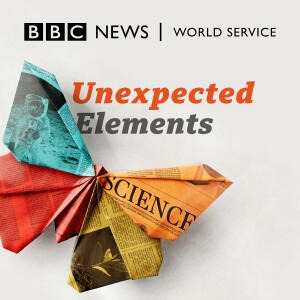
Roland Pease reports from the American Association for the Advancement of Science’s annual meeting in Seattle. At the UK Research and Innovation’s stand in the exhibition hall, he’s joined by three scientists to discuss monitoring the Coronavirus outbreak, the locusts devastating crops in East Africa and the ever increasing amount of space junk orbiting the Earth.
Professor Jeffrey Shaman of the Mailman School of Public Health at Columbia University talks about how he is modelling the movement of Covid-19 around China and beyond.
Dr Catherine Nakalembe, of the University of Maryland and East Africa Lead for NASA Harvest explains how she uses data collected by satellites to find out where crops are thriving and where they are not. She also talks about how this technology can alert countries to approaching locust swarms.
And Professor Moriba Jah of University of Texas at Austin, tells Roland why he’s concerned about the amount of space junk that’s orbiting the earth and why so little is being done about controlling satellite launch and disposal.
A lovely day out in the countryside can be blighted when swarms of midges or mosquitos invite themselves to the party. A CrowdScience listener in New Zealand has noticed that, when sand-flies come a-biting, she and her daughter are targeted, while her husband and other daughter escape unharmed. She wants to know why some, but not all of her family become bait for insect bites. CrowdScience delves into a world of smells, called semiochemistry, which explores the aromas one animal uses to attract or repel another. Does our attractiveness as a blood meal to insects come down to what we wear, what we’ve eaten or is it all in our genes? Host Marnie Chesterton discards the DEET and bravely offers herself up as a meal for mozzies, in a quest for answers.
(Image: Artist response to NASA Harvest discussion at AAAS Credit: Lorenzo Palloni)
view more
More Episodes
Human genome editing: Promise and Peril
 2023-03-12
2023-03-12
 2023-03-12
2023-03-12
Drought worsens in East Africa
 2023-03-05
2023-03-05
 2023-03-05
2023-03-05
Animals at the Wuhan Market
 2023-02-26
2023-02-26
 2023-02-26
2023-02-26
Cyclone Freddy batters Madagascar
 2023-02-26
2023-02-26
 2023-02-26
2023-02-26
CRISPR & bioethics
 2023-02-19
2023-02-19
 2023-02-19
2023-02-19
Turkey-Syria earthquake
 2023-02-11
2023-02-11
 2023-02-11
2023-02-11
Science on ice
 2023-02-05
2023-02-05
 2023-02-05
2023-02-05
Bird flu (H5N1) outbreak in mink
 2023-01-29
2023-01-29
 2023-01-29
2023-01-29
Climate science activism
 2023-01-22
2023-01-22
 2023-01-22
2023-01-22
Atmospheric rivers
 2023-01-15
2023-01-15
 2023-01-15
2023-01-15
One year on from the Tonga eruption
 2023-01-08
2023-01-08
 2023-01-08
2023-01-08
Mosquito pesticide failing
 2022-12-25
2022-12-25
 2022-12-25
2022-12-25
Fusion milestone
 2022-12-18
2022-12-18
 2022-12-18
2022-12-18
Ancient warmth in Greenland
 2022-12-11
2022-12-11
 2022-12-11
2022-12-11
COVID spreads in China
 2022-12-04
2022-12-04
 2022-12-04
2022-12-04
A distant planet’s atmosphere
 2022-11-27
2022-11-27
 2022-11-27
2022-11-27
Online harassment of Covid scientists
 2022-11-20
2022-11-20
 2022-11-20
2022-11-20
What peat can tell us about our future
 2022-11-06
2022-11-06
 2022-11-06
2022-11-06
012345678910111213141516171819
Create your
podcast in
minutes
- Full-featured podcast site
- Unlimited storage and bandwidth
- Comprehensive podcast stats
- Distribute to Apple Podcasts, Spotify, and more
- Make money with your podcast
It is Free
- Privacy Policy
- Cookie Policy
- Terms of Use
- Consent Preferences
- Copyright © 2015-2024 Podbean.com



